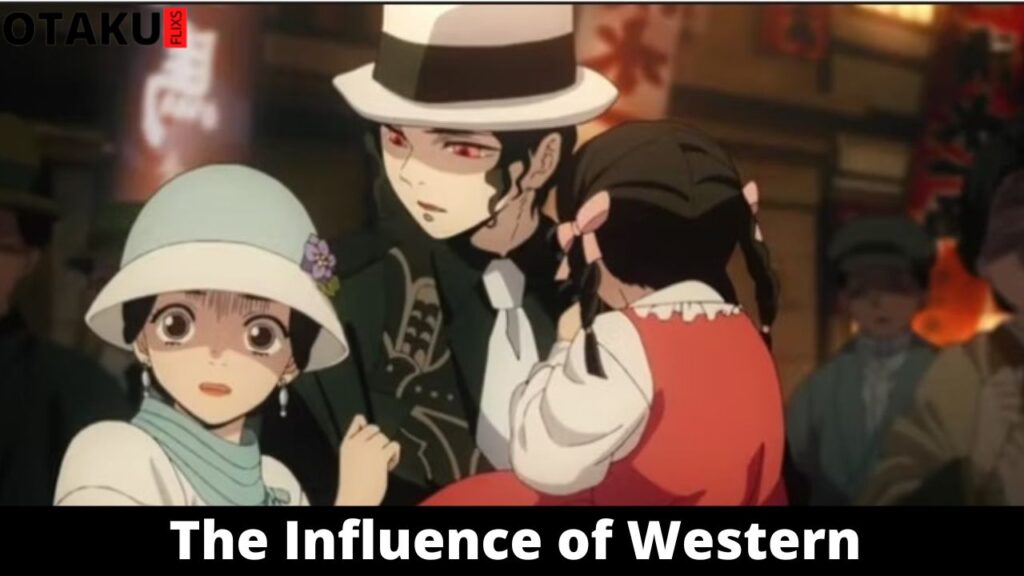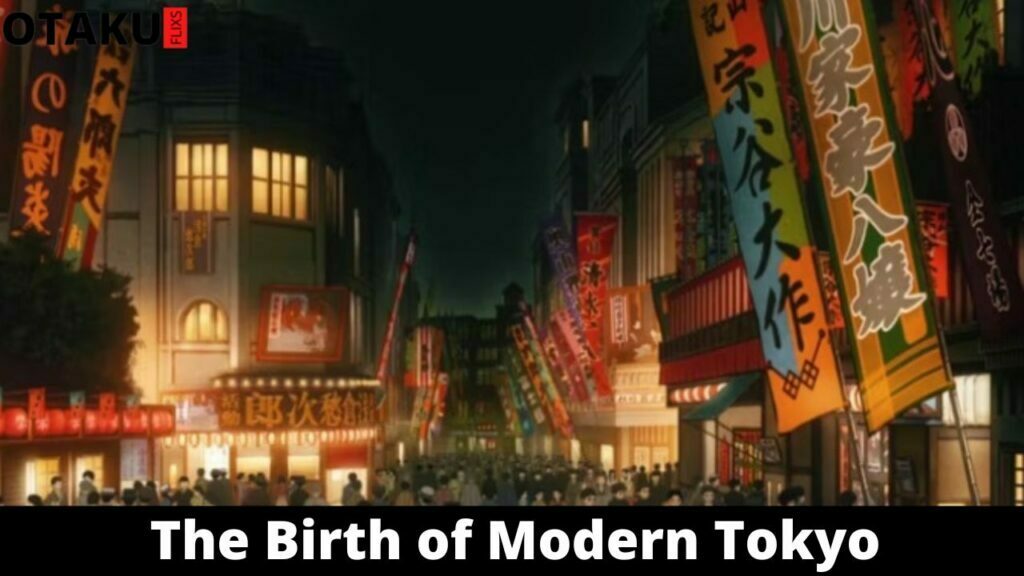Demon Slayer might be a dream anime, but on the other hand, it’s set in a constant time of Japanese history. While the specific date is obscure, the time span is the Taishō Era.
This period of Japanese history is one of the most briefs, enduring just from July 30th, 1912 to December 25th, 1926. Demon Slayer‘s story is set someplace in these 14 years.
Obviously, the tale of Demon Slayer is one of fiction – there were possible, not genuine devils in the woodlands and heaps of Japan, asking on and eating people all through the Taishō Era.
Notwithstanding, the time span impacts the setting no different either way.
There are components of the story that attach it to its memorable setting, and we can utilize those components to gain proficiency with a piece about this less popular time of Japanese history.
The Influence of Western Fashion

The Taishō Era was soon after Japan started to gradually open up toward the West, and Western impact in the recent shut-off country truly started to take off. One of the simplest ways of seeing this is through style. While only years and years prior, everybody actually wore just conventional garments like kimono, hakama, and haori, abruptly ladies wore dresses and men wore suits.
Obviously, it wasn’t everybody, except particularly in urban areas like Tokyo Western-style garments became trendy.
At the point when Tanjiro first experiences Muzan in Tokyo in Season One, Muzan is dressed sagaciously in a dark suit and white fedora, even while many individuals around him are wearing kimonos.
Different characters behind the scenes are likewise wearing a blend of Japanese and Western styles. This was extremely normal in the city in the Taishō Era. Indeed, even the Hahira, Tanjiro, and Zenitsu wear equips that are very Taishō.
The greater part of the individuals wears a conventional haori over a highly contrasting uniform that looks like a well-known school uniform from the Taishō Era. This style was advocated by the Prussian military at that point. The Hashira’s looks are right out of the Taishō Era, mixing Eastern and Western styles.
The Birth of Modern Tokyo

Piggybacking on the last point about power, the Taishō Era likewise permitted Tokyo to modernize genuinely. After a huge quake in 1923 in Tokyo, a large part of the city was reconstructed and began to turn into the city we know today.
Devil Slayer happens before that seismic tremor, however (on the grounds that the Ryounkaku, a structure which should be visible behind Tanjiro when he partakes in a bowl of udon in Ginza, was obliterated in the quake) yet that doesn’t mean the city was not currently on the way to modernization.
The electric lights wherever are the main indication of advancement that can be tracked down in the realm of Demon Slayer. Something else you can see in the foundations explicitly of the episodes set in Tokyo is a blend of both Japanese-style and Westernized engineering.
Japan had started to be affected by Western-style yet addition by Western structures.
The Taishō Era likewise made Ginza and Asakura into well-known shopping regions since they were so extravagant and current contrasted with the remainder of the country. Individuals came from everywhere to wear popular garments and shop in those areas.
Both Ginza in Season One of Demon Slayer and Asakura in the Entertainment District Arc is brimming with additional individuals than Tanjiro and his companions have at any point seen. Furthermore, once more, as the salt of the earth people, they are overpowered by the colossal groups.
Steam Locomotives

One final point that we can find out about the Taishō Era from Demon Slayer was, alongside the other modernization occurring, steam motors were becoming famous to travel significant distances.
Today Japan is interlinked by some fast and nearby trains, however, that didn’t begin until around the Taishō Era. It actually was not a famous site to see trains beyond significant urban communities, with not many going through provincial Japan.
Obviously, as to Demon Slayer, we are discussing the Mugen Train! This significant distance train is basic to the world well known Demon Slayer film. At the point when Inosuke, who experienced childhood with a mountain, sees the steam motor interestingly he thinks it is a beast.
It’s a good idea that he couldn’t ever have seen a machine so huge in his life, and numerous provincial individuals in the Taishō Era alluded to steam motors as “fire mythical beasts.” They were still generally novel for most commoners.
Generally speaking, the Taishō Era in Japan was one on the cusp of modernization and the beginning of Western impact in customary Japan. These components play into the setting of Demon Slayer in unobtrusive ways that cause a dream story to have a truly verifiable premise.
The Taishō Era isn’t ahead of schedule as well known as the Meiji or Edo periods, the two of which are the typical decisions for verifiable anime.
That makes Demon Slayer a once-in-a-lifetime opportunity to find out a little about a short, semi-secret time in Japanese history that truly overcome any issues between customary and present-day Japan more than some other!
Widespread Electricity

While power was normal in the large urban areas by the beginning of the twentieth 100 years, it was not yet normal in the country parts of Japan. However, in the Taishō Era, that started to change. Power started to be tracked down even in more modest, more wide-open towns and in ordinary individuals’ homes.
From the principal episode of Demon Slayer, you can as of now see this. At the point when Tanjiro goes into the little mountain town to sell charcoal, there are electric posts noticeable coating the roads.
Power was significantly more normal in the urban areas. At the point when Tanjiro and Nezuko first travel to Tokyo, they are overpowered by the occupied and splendidly lit roads of Ginza.
Exactly the same thing reoccurs in the Entertainment District bend, when Tanjiro, Zenitsu, and Inosuke show up in Asakusa. All the three are stunned by the advancement of the city and its splendid lights, which appears to be legit. Individuals who grew up more unassumingly in the wide open couldn’t have ever seen any such thing previously.














